Glycemic Index and Diabetes
Category: Chronic Illness

Did you know that according to the large-scale Nurses’ Health Study, women eating the highest glycemic load diets were much more likely on average to develop type 2 diabetes compared to women of the same age with the lowest glycemic load diets?
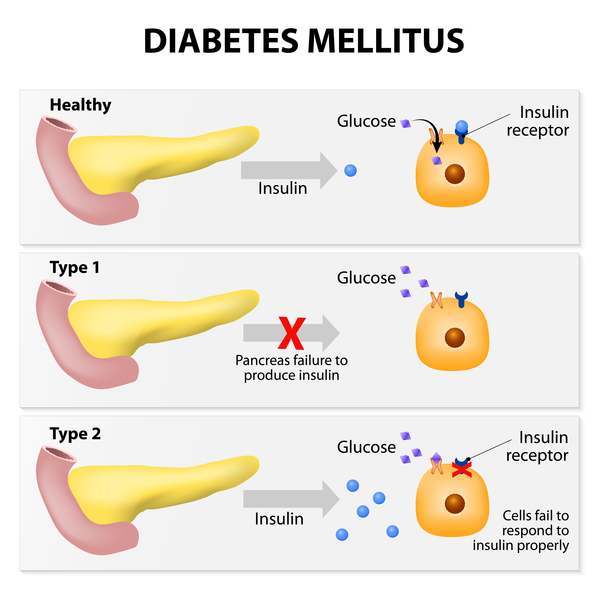
Type 2 diabetes is a progressive condition in which the body becomes resistant to the normal effects of insulin and/or gradually loses the capacity to produce enough insulin in the pancreas. It used to be called adult onset diabetes, but sadly, because children are now developing the disease, the name was changed to type 2.
While your genes can increase your risk of developing type 2 diabetes, other factors including obesity, changes to diet and the food supply, and more sedentary lifestyles are some major reasons why many populations around the world are seeing more cases of type 2 diabetes.
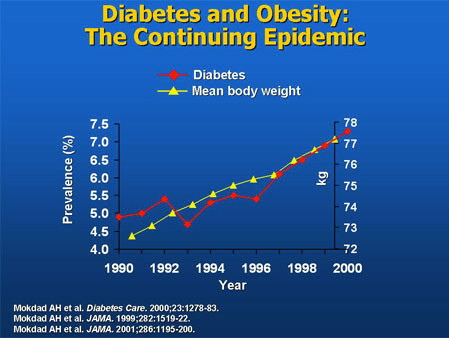
Type 2 diabetes accounts for 85% of all diabetes and that percentage is increasing. Over 100 million Americans either have type 2 or pre-diabetes, that is, their insulin resistance is heading toward the diabetic range.
Diabetes increases the risk of a host of serious health issues, including loss of vision, neuropathy, and circulation problems leading to amputation. Studies have shown that the risk of these complications goes up the more times the patient’s blood glucose (sugar) becomes too high or too low. This is when the glycemic index of foods becomes important.
The glycemic index (GI) is a tool that’s used to indicate how a particular food affects blood sugar (or glucose) levels. It was created in the early 1980s by Dr. David Jenkins, a Canadian professor. The glycemic index of a food is determined by a small clinical trial in healthy subjects. After an overnight fast, they eat either the test food or white bread, a food that causes a rapid rise in blood sugar because its carbohydrates are rapidly broken down and absorbed. The next week, the subjects repeat the test with the opposite type of food. Each subject is then his or her own control. Serving sizes are adjusted so that the amount of available carbohydrate is the same for both foods. Blood is drawn from the subjects over several hours after they eat the foods. If the test food causes a rise in blood sugar similar to the white bread, it is said to be high glycemic index.
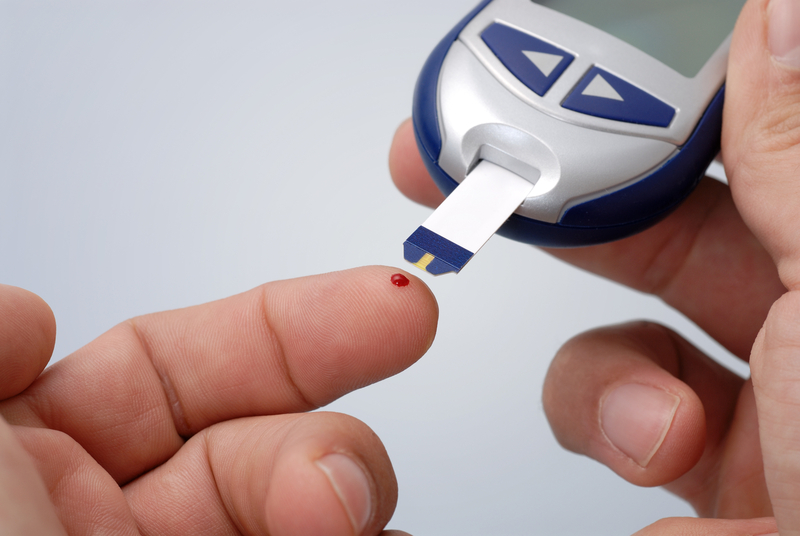
Other Factors That Affect the GI of Food
Fat and fiber tend to lower the GI of food. As a general rule, the more cooked or processed the food is, the higher the GI; however, this is not always true.
Below are a few specific examples of other factors that can affect the GI level of food:
- Processing – juice has a higher GI than whole fruit; mashed potato has a higher GI than a whole baked potato, stone ground whole wheat bread has a lower GI than whole wheat bread.
- Ripeness and storage time – the more ripe a fruit or vegetable is, the higher the GI
- Variety – converted long-grain white rice has a lower GI than brown rice but short-grain white rice has a higher GI than brown rice.
- Cooking method – how long a food is cooked (al dente pasta has a lower GI than soft-cooked pasta)
Simply put, when you eat foods high on the glycemic index scale, you experience a faster, more significant increase in your blood glucose level. When you eat foods with lower GI, the increase in blood sugar is slower and more sustained.
This process has an effect on how you feel after eating the food, including how satisfied or full you are, how quickly you get hungry again or experience cravings for more, and how much of a lift in energy the food tends to provide you.
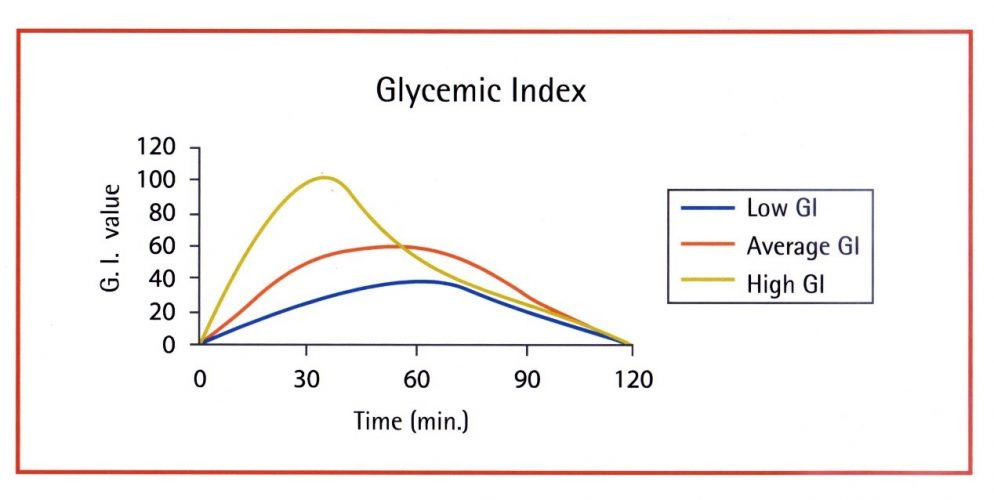
The rates at which different foods raise blood sugar levels are ranked in comparison with the absorption of 50 grams of pure glucose, which is used as a reference food and has a GI value of 100.
The following are the three GI ratings:
- Low: 55 or less
- Medium: 56 to 69
- High: 70 or more
Foods with a low glycemic load (index) only cause a modest rise in blood sugar and are better choices for people with diabetes (or pre-diabetes). Again, good glycemic control can help in preventing long-term complications of type 2 diabetes.
A low glycemic diet has benefits including helping to normalize blood sugar, prevent insulin resistance, prevent fatigue, and keep you fuller and energized longer.
Low-GI foods include:
– All non-starchy vegetables, such as lettuce and leafy greens, broccoli, spinach, onion, green beans, etc. Potatoes are high GI, but sweet potatoes are not.
– Most fruits, including stone fruits, apples, berries, cherries, and citrus fruits
– Nuts, beans, seeds and legumes
– Plain, unsweetened yogurt and cheeses (choose organic and raw when possible)
– Minimally processed whole grains, such as steel-cut oats, brown rice, wild rice, sprouted grain breads, granola and muesli, and whole-wheat pasta
Aside from consuming low-glycemic foods, another important thing you can do when confronted with diabetes is to take a look at what is going into your body. Losing excess weight and maintaining a healthy diet with proper supplementation can help you take control of your blood sugar issues. And getting a little exercise after meals, perhaps by taking a brisk walk, helps your body use that sugar as it enters your bloodstream.

Dr. Daggy says: Leaning into a diet with fewer high GI foods is a good idea in general, not just for people with type 2 diabetes. Modern diets tend to be high in sugars and low in fiber; we need to flip that around. But one exception to avoiding high GI food is when you’re doing prolonged, intense physical activities. Sport drinks are high GI, because in that exercise setting, your muscles can use all the rapidly absorbed carbohydrates you can provide them.
Jamie McManus, M.D., FAAFP, the Chair of Medical Affairs, Health Science, & Education for Shaklee, also recommends the following plan:
– Get the right amount of fiber
Fiber plays two roles in people who are looking to lose weight. The first is that it helps them feel full and the second is it helps to keep blood sugar stable.
– Decrease your caloric intake
By decreasing calories you will begin to lose weight. With a good plan in place, you can do this without feeling hungry or like you are starving yourself. If you are unsure of what your caloric number each day should be to achieve weight loss, consult your doctor.
– Get the right amount of protein
Remember that protein is the key to any good weight-loss program as it helps us feel fuller longer and helps us to retain our muscle mass. Unfortunately there are many weight loss plans out there that ignore the importance of protein.
It is essential when losing weight to not lose your lean body mass (muscles). When you lose lean body mass, you are slowing your metabolism. So, can you go on a weight-loss program when diabetic? The answer is yes! Just choose wisely.
If you’re wondering where you can find a simple healthy weight-loss plan that can help retain lean muscle and support healthy blood pressure and blood sugar levels, you might want to try the Shaklee 180 Turnaround Kit.
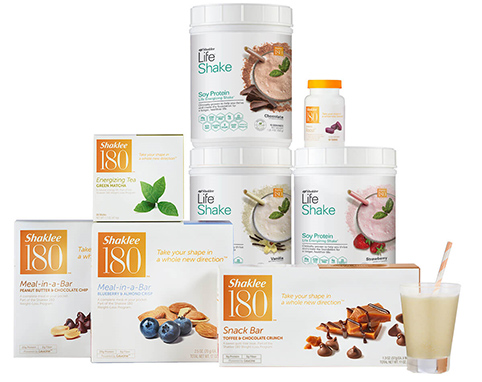
The Shaklee 180 Turnaround Kit is powered by leucine which has been shown to be a crucial building block of protein and plays a key role in maintaining glucose levels and producing energy.
This amazing kit is also low glycemic, which correlates to a slower rate of digestion and gradual release of glucose, contributing to better weight control.
If a low glycemic diet seems overwhelming or restrictive, remember that your diet doesn’t have to be complicated to be healthy. Keep things simple by using common sense and choosing carbohydrate sources that are the least processed and contain the fewest added ingredients. Foods like fruits, ancient whole grains, sweet potatoes, beans, and others don’t need to be removed from your diet—it’s all about balance and eating real foods!
Here’s to a healthier you!
Anne/Jeffrey

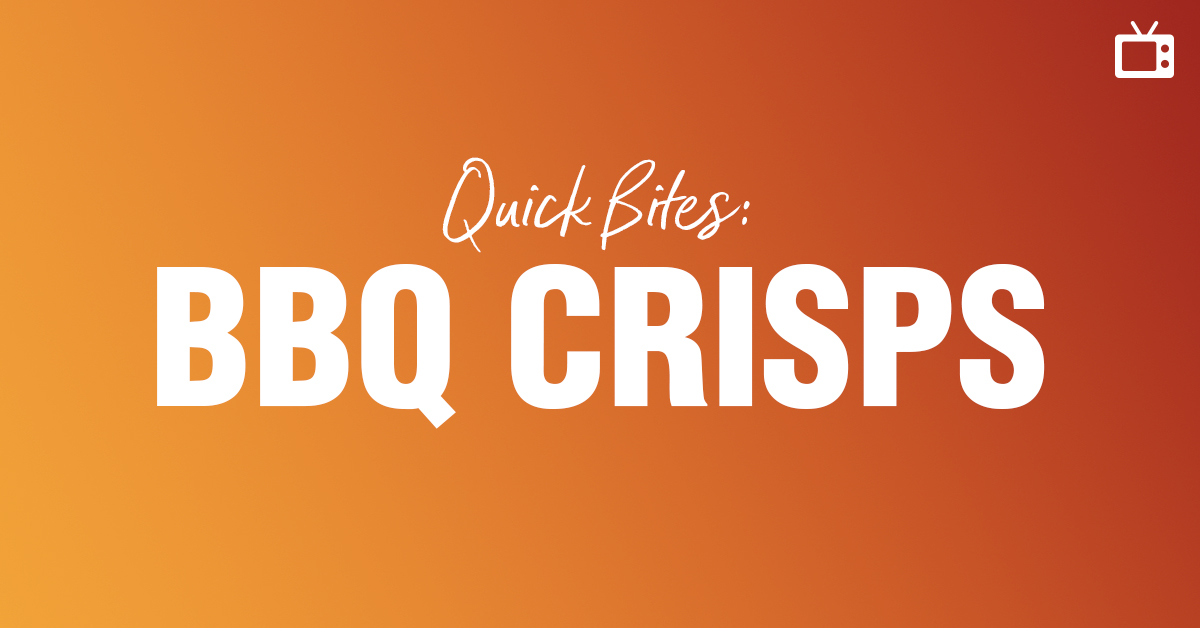

Facebook Comments